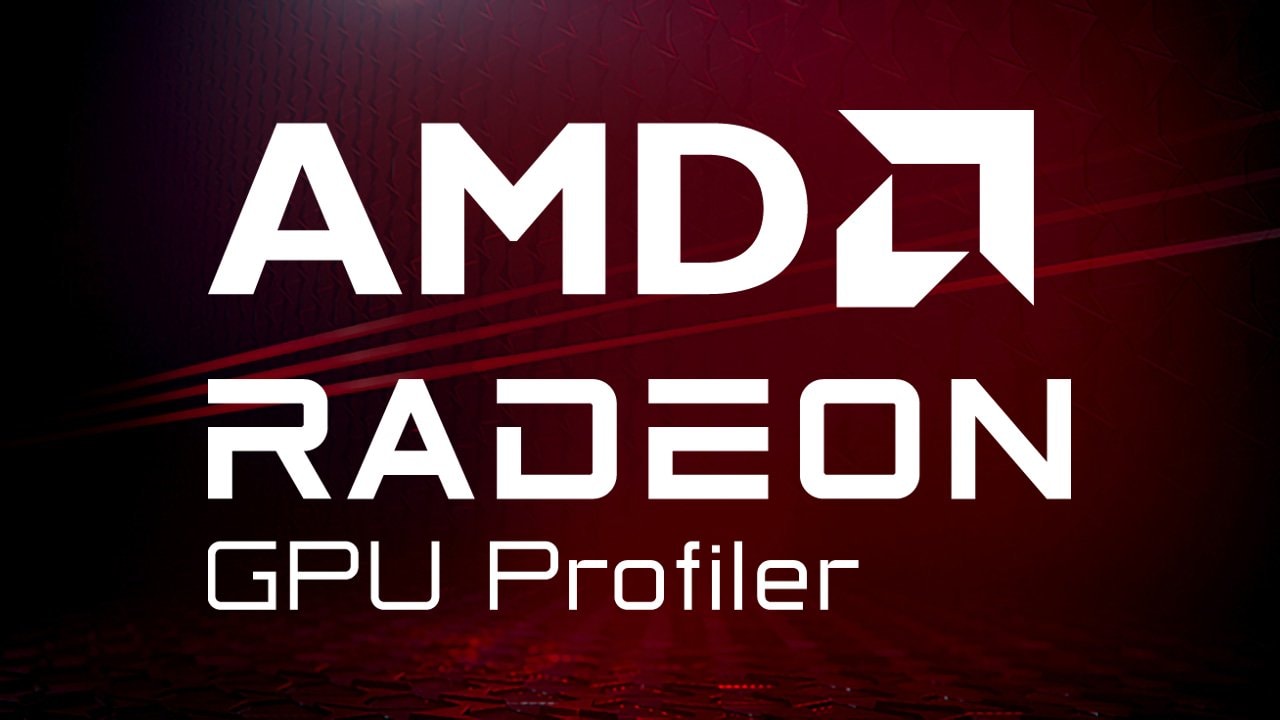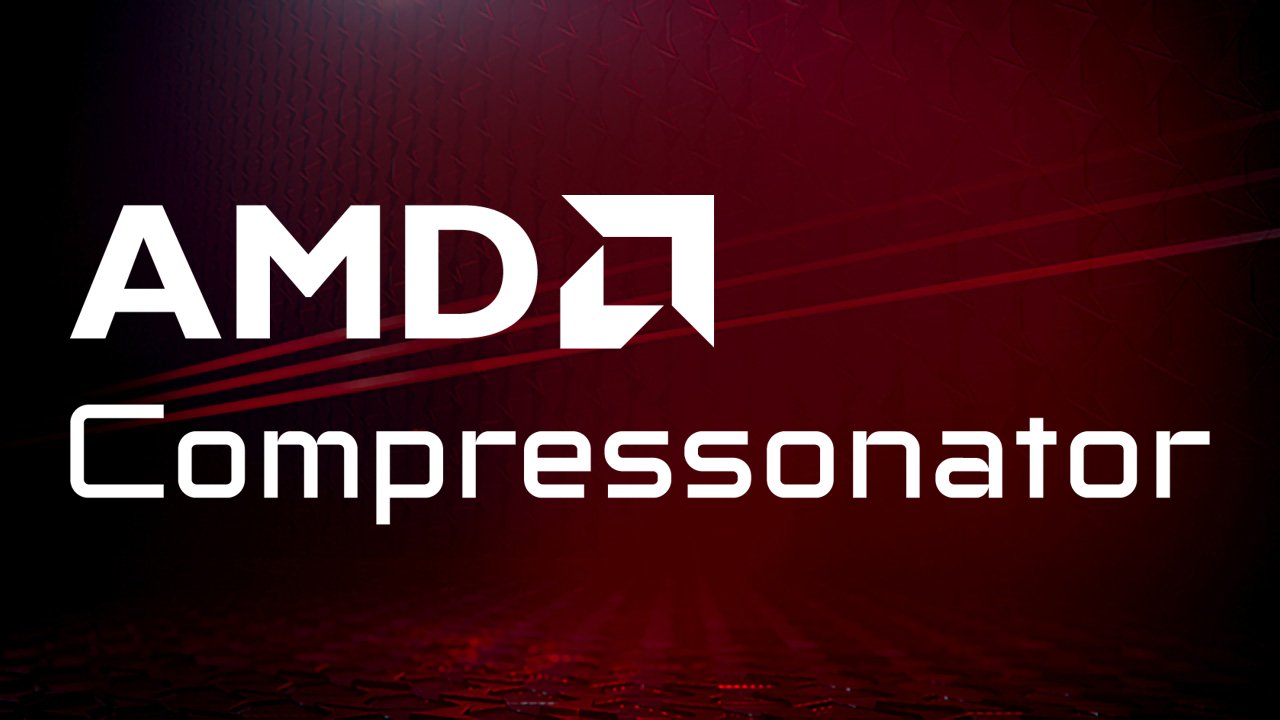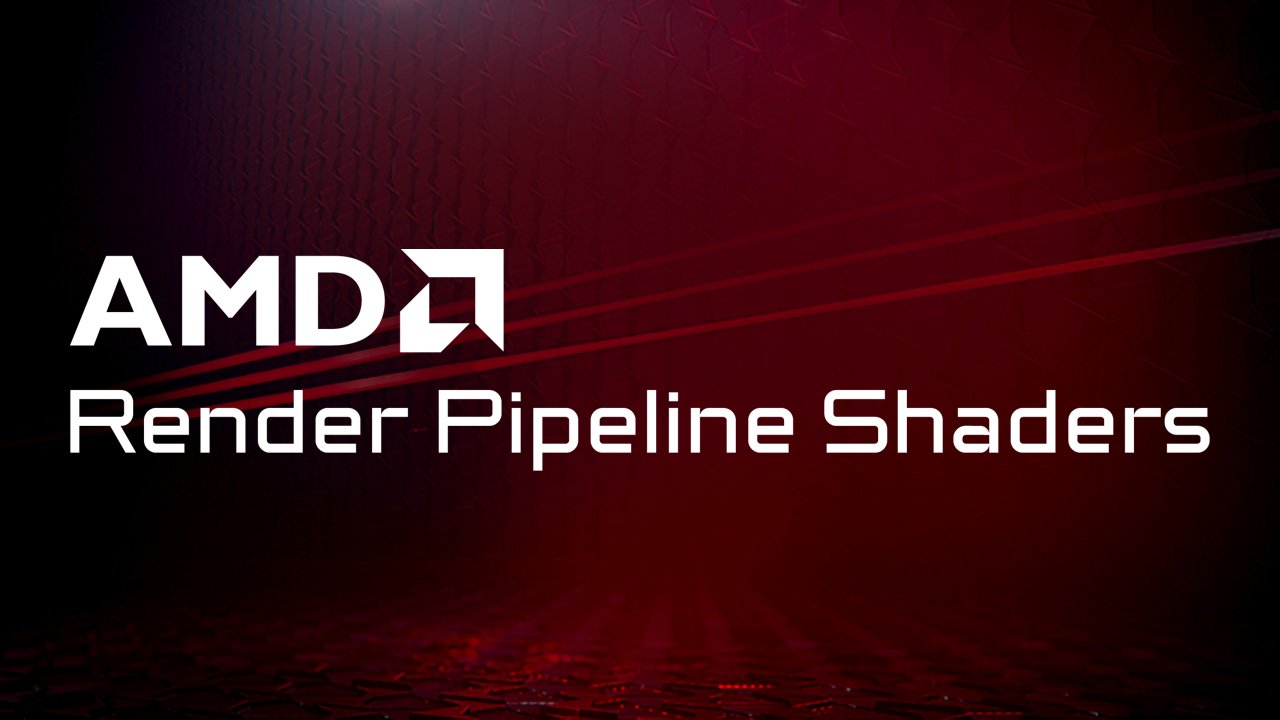Software blogs

Looking for information about our software products?
The blogs on this page give detailed information about what’s in our new releases and updates, as well as guides on how you can use the new features.
Jump to the section you need:
Don’t forget – you can find advice on developing with AMD hardware, HPC, ML, ray tracing, Vulkan®, DirectX®, Unreal Engine, and lots more over in our technical blogs.
Featured posts
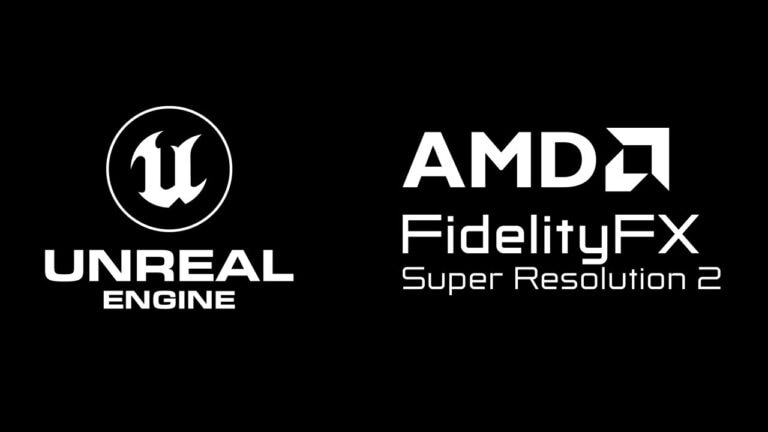
How to use the AMD FidelityFX™ Super Resolution 2 (FSR 2) Unreal Engine plugin
Find out how to install and configure the AMD FidelityFX Super Resolution (FSR) 2 plugin for Unreal Engine 4.26/4.27 and UE5.
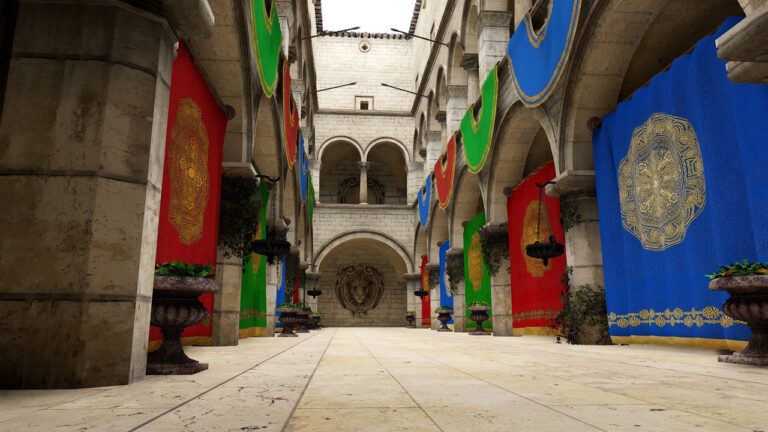
Introducing AMD Capsaicin Framework – our ARR Research Framework which includes our GI-1.0 sample
AMD Capsaicin Framework is a research framework for real-time graphics which we have been using to develop and test new and upcoming rendering algorithms. We are now releasing it to the public.
Radeon™ Developer Tool Suite
Our highly-acclaimed developer tool suite should be your first port of call when analyzing and optimizing your game or graphics application. Our tools engineers frequently write detailed blog posts to accompany major updates, making sure you’re able to take full advantage of the new features.
The Radeon Developer Tool Suite comprises of:
Radeon GPU Profiler, Radeon Raytracing Analyzer, Radeon Memory Visualizer, Radeon GPU Analyzer, and Radeon™ Developer Panel.
Radeon GPU Profiler (RGP)
The Radeon GPU Profiler is a ground-breaking low-level optimization tool that provides detailed information on Radeon™ GPUs.

New Work Graphs sample & RGP support for GPU Work Graphs
“D3D12SimpleClassify” shows the use of a GPU Work Graph in a simple frame-based graphics application, plus learn about new RGP support.

Radeon™ GPU Profiler 1.15 provides an enhanced ISA view experience and more
Radeon GPU Profiler v1.15 adds an enhanced user experience for GPU ISA disassembly, mesh shader event names, WMMA support, and more.

RDNA 3: Radeon GPU Profiler 1.14 introduces support for Radeon™ RX 7000 Series, HIP, and more
Radeon GPU Profiler 1.14 is here, with support for Radeon™ RX 7000 series GPUs, profiling HIP applications, and much more. Take a look!

Radeon™ GPU Profiler 1.13 and Radeon Developer Panel 2.6
RGP 1.13 adds enhanced ray tracing features, such as new performance counters and inline RT. RDP 2.6 includes improved data capture.

Radeon™ GPU Profiler 1.12 features improvements to Instruction Timing
RGP 1.12 provides some significant enhancements to the Instruction Timing feature, including wavefront filtering and single-wavefront mode.

Understanding Graphs in Radeon GPU Profiler and GPUView
Find out how to read and understand graphs in Radeon GPU Profiler and GPUView in order to optimize your game more effectively.

Radeon™ GPU Profiler 1.11 released
RGP 1.11 introduces ray tracing call targets, enhancements to cache counters, and more.

Radeon™ GPU Profiler v1.10 introduces GPU cache counters, Vulkan® ray tracing, and more
This latest release adds support for GPU cache counters, Vulkan® ray tracing, the latest RDNA™ 2 GPUs, and more.

Radeon™ GPU Profiler 1.9 introduces support for Radeon™ RX 6000 Series
The latest release of RGP introduces support for Radeon™ RX 6000 Series (RDNA™ 2) and DirectX® Raytracing, along with several additional new features.

Unified Radeon™ GPU Profiler and Radeon™ Memory Visualizer usage with Radeon™ Developer Panel 2.1
This tutorial explains how to take advantage of the functionality in RDP v2.1 onwards, which unifies the RMV and RGP functionality from earlier versions to provide a unified workflow.
Radeon GPU Analyzer
The Radeon GPU Analyzer is an offline compiler and performance analysis tool for DirectX®, Vulkan®, SPIR-V™, OpenGL®, and OpenCL™.

Visualizing VGPR Pressure with Radeon™ GPU Analyzer 2.6
Radeon GPU Analyzer 2.6 introduces VGPR Pressure Visualization. This post explains exactly how to get the most out of this brand-new feature.

Using Radeon™ GPU Analyzer v2.4.1 with DirectX® Raytracing
Radeon™ GPU Analyzer v2.4.1 introduces support for DXR shaders in a new mode of the command line tool.

Using the Visual Studio® Code Extension for RGA
This is a Visual Studio® Code extension for the Radeon GPU Analyzer (RGA). This extension makes it possible to use RGA directly from within VS Code.

Using Radeon™ GPU Analyzer with DirectX®12 Graphics
With DirectX 12 comes the power of generating disassembly and hardware resource usage statistics that are closest to the real-world case, and therefore making better performance optimization decisions.

Using Radeon™ GPU Analyzer with Direct3D®12 Compute
Radeon GPU Analyzer (RGA) has support for DirectX12 compute shaders with the command line tool. This mode can generate GCN/RDNA ISA disassembly for your compute shaders, regardless of the physically installed GPU.
Radeon Memory Visualizer
The Radeon Memory Visualizer allows you to gain a deep understanding of how your application uses memory for graphics resources.

Radeon™ Memory Visualizer 1.6 introduces improved device configuration info and an expanded Resource details pane
Radeon Memory Visualizer v1.6 adds improved device configuration information, and more parameters on the resource details pane.

Announcing Radeon™ Memory Visualizer support for Linux
RMV is now available on Linux. RMV and RDP officially support Ubuntu 20.04 with Linux distros requiring additional dependencies. Check it out!

Radeon™ Memory Visualizer 1.4 introduces Smart Access Memory support
Find out in this blog post how you can make all memory visible to the CPU in Radeon Memory Visualizer (RMV) v1.4 with Smart Access Memory.

Viewing DirectX® 12 Named Resources with Radeon™ Memory Visualizer 1.3
Radeon Memory Visualizer (RMV) now supports Named Resources in DirectX® 12 applications. This blog explains how you can view them in RMV.

Radeon™ Memory Visualizer v1.1 adds support for aliased resources and more
Radeon Memory Visualizer V1.1 introduces support for aliased resources, and allows selection of a resource in the memory leak finder pane.

Unified Radeon™ GPU Profiler and Radeon™ Memory Visualizer usage with Radeon™ Developer Panel 2.1
This tutorial explains how to take advantage of the functionality in RDP v2.1 onwards, which unifies the RMV and RGP functionality from earlier versions to provide a unified workflow.

Getting Started with Radeon™ Memory Visualizer (RMV)
Radeon™ Memory Visualizer (RMV) is a tool provided by AMD for use by game engine developers. It allows engineers to examine, diagnose, and understand the GPU memory management within their projects.
Radeon Raytracing Analyzer
Our brand new Radeon Raytracing Analyzer allows you to investigate the performance of your raytracing applications and highlight potential bottlenecks.

Radeon™ Raytracing Analyzer 1.2 adds ray face culling flags, ray traversal histograms, and more
Radeon Raytracing Analyzer v1.2 introduces ray face culling flags, a ray traversal histogram, a geometry list pane, and an instance mask.

RDNA 3: Read about our tool updates in Radeon Developer Tool Suite (RDTS)
Read this high level summary of our updates to RDTS for RDNA™ 3, including other new features and improvements, plus updates to GPUPerfAPI.
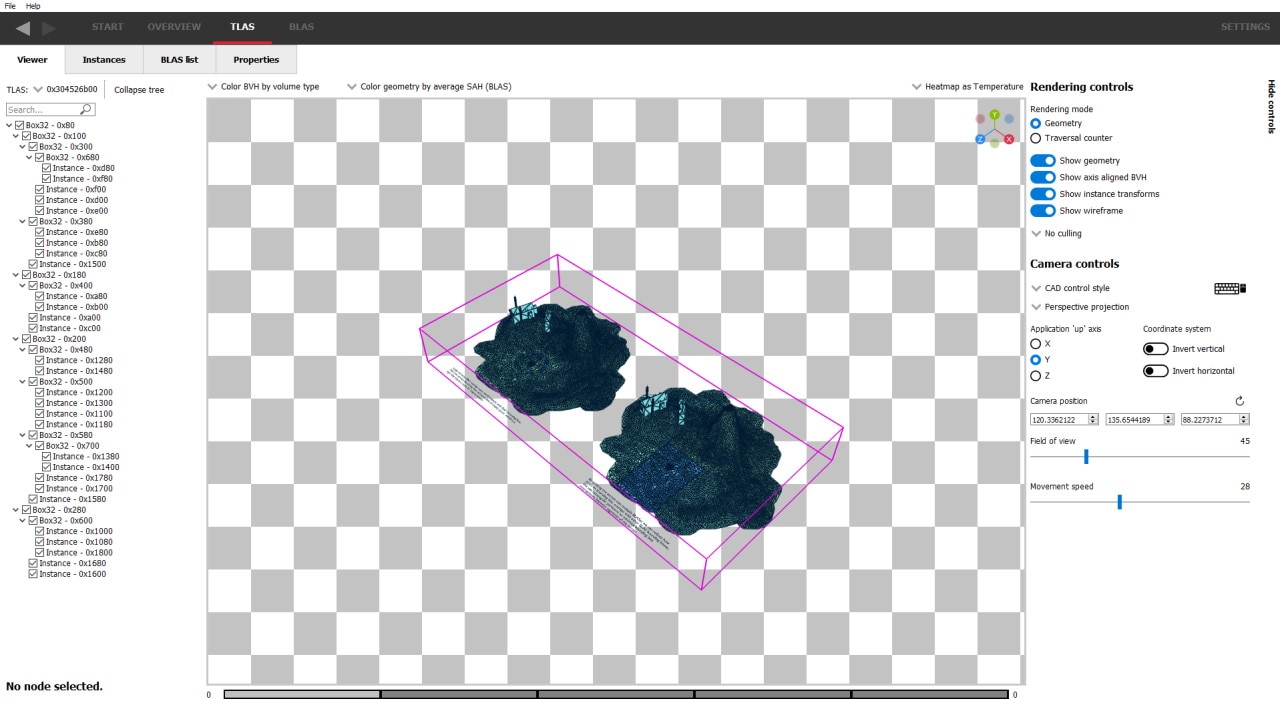
Learn about Radeon™ Raytracing Analyzer 1.1
The latest update for RRA includes changes to the camera system and support for split triangles and rebraided instances. Check it all out here!

Radeon™ Raytracing Analyzer source code available + meet amdrdf
Analyze the source code to RRA, and learn about amdrdf, a library for handling Radeon Data File (RDF) format, used by RRA and others.
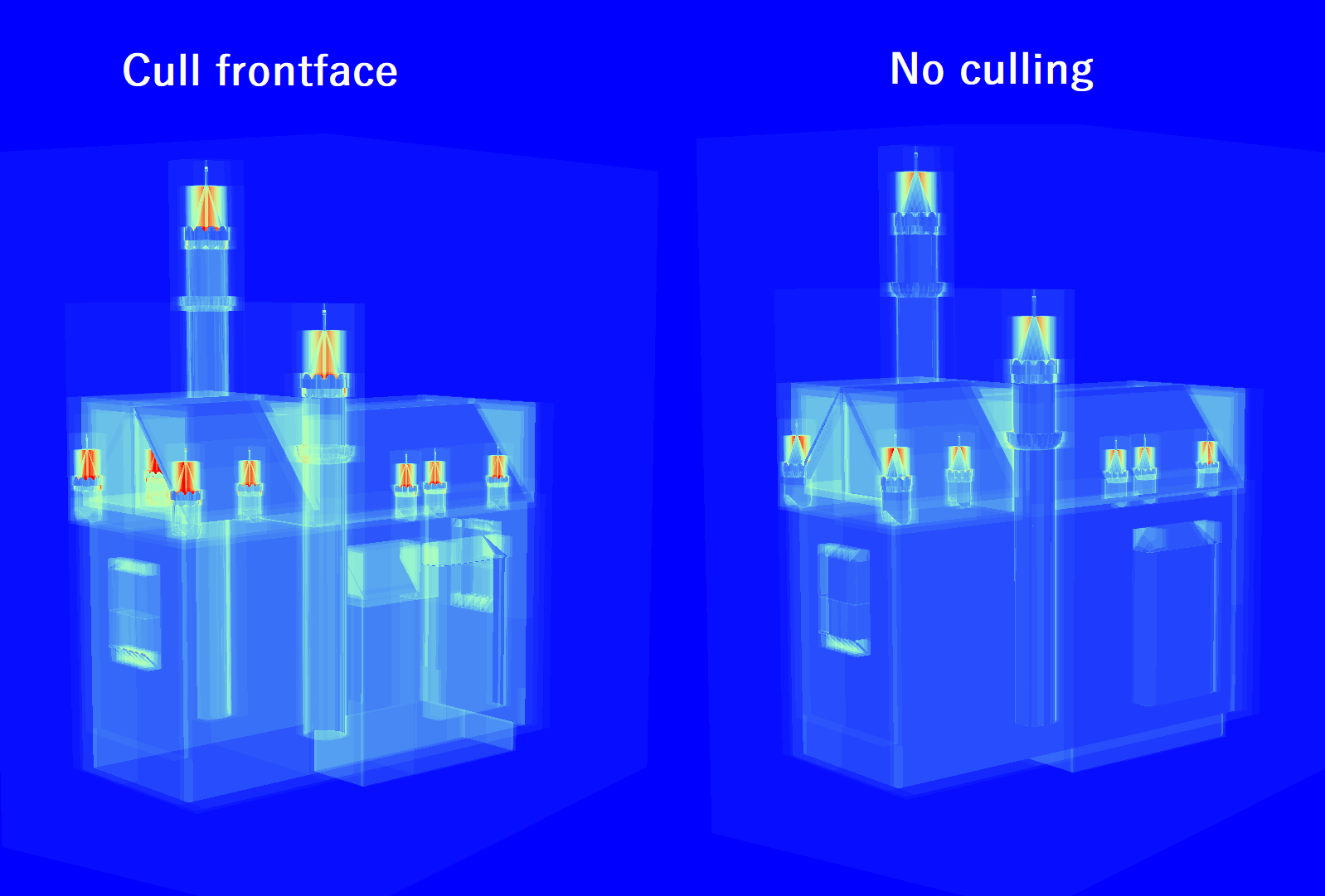
Improving raytracing performance with the Radeon™ Raytracing Analyzer (RRA)
Optimizing the raytracing pipeline can be difficult. Discover how to spot and diagnose common RT pitfalls with RRA, and how to fix them!

Introducing our brand new tool: Radeon™ Raytracing Analyzer 1.0
We’re proud to announce Radeon Raytracing Analyzer. RRA provides the tools you need to investigate raytracing performance in your apps.
Other tools on GPUOpen
Compressonator
Compressonator is one of our oldest and widely-used tools/SDKs. It is a set of tools which allow artists and developers to more easily work with compressed assets and easily visualize the quality impact of various compression technologies.
It consists of a GUI application, a command line application, and an SDK for easy integration into a developer toolchain.

Introducing Compressonator v4.4 with AVX-512 support for BC1 Encoding
Compressonator v4.4 adds AVX-512, AVX2, and SSE4 variations of BC1 encoding in the Compressonator Core library, new CLI options, and more.

Introducing Compressonator v4.3 – Brotli-G, multi-texture mipmap generation, and more
Compressonator v4.3 is out now! v4.3 features Brotli-G lossless compression, multi-texture mipmap generation, and much more.

Brotli-G: An open-source compression/decompression standard for digital assets that is compatible with GPU hardware
Get the details on Brotli-G, including the modifications we made to Brotli, and how you can use it via our new SDK and Compressonator.

Compressonator 4.2 – Features update for BC1 and BC7 codecs, and more
Compressonator v4.2 brings improvements for BC1 and BC7 codecs, plus API, SDK, and CMake updates.

Compressonator 4.1 – SNORM support for BC4/BC5, MIP map filter support, and more
Compressonator v4.1 adds SNORM support for BC4 and BC5, MIP map filter support using either GPU or CPU, GPU-based compression and MIP map generation, and much more.
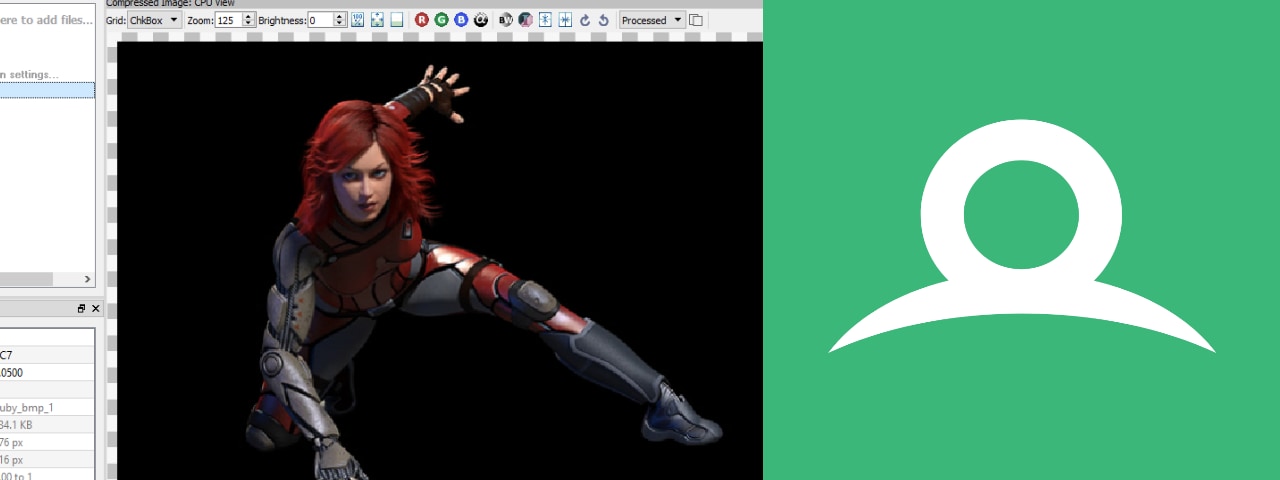
RenderDoc 1.8 has Compressonator support
When associated with DDS files, RenderDoc generates thumbnails for DDS formats and displays them in Windows Explorer. Compressonator Core provides functions for compressing and decompressing DDS files.

Compressonator 4.0 – Utilize the Power of GPU-based Encoding
The Windows version of Compressonator 4.0 supports GPU encoding with DirectX® Compute (DXC) or OpenCL™ (OCL) shaders.

Announcing Compressonator 3.2
The latest version of Compressonator is now available, featuring new BCn codec kernels, framework interfaces, cube maps, and more.

New Compressonator 3.1 SDK for seamless integration into asset toolchains – and more!
This version contains several new features and optimizations, including new installers for the SDK, CLI and GUI tool, new batch compress support, improvements to Compressonator’s BC6H and ETC2 support, a new glTF model previewer, and more.

Compressonator V3.0 release brings powerful new 3D model features
Compressonator is a set of tools that allows artists and developers to work easily with compressed assets and easily visualize the quality impact of various compression technologies.

Compressonator V2.7 Release adds cross platform support and 3D Model compression with glTF v2.0
Information about the new features and optimizations in Compressonator v2.7.

Compressonator V2.6 release adds HDR tonemapping compression, new image analysis features
Information on the new features of Compressonator v2.6.
SDKs
We have many, many SDKs on GPUOpen, as you’d probably expect! While you’ll find blogs on some of them grouped elsewhere on this page, here’s some of the more recent ones.

Vulkan Memory Allocator v3.1, with many fixes and improvements, is out now!
VMA V3.1 gathers fixes and improvements, mostly GitHub issues/PRs, including improved compatibility with various compilers and GPUs.

GI-1.1 adds support for glossy reflections rendering
GI-1.1 is available now as part of the AMD Capsaicin Framework. GI-1.1 includes new support for glossy reflections rendering.

AMF v1.4.33 provides native DX12 encoding support, public Vulkan Khronos decoding extensions + more
In addition, AMF on Linux can now be used with AMD Pro Vulkan and experimentally with RADV drivers. Download Advanced Media Framework now!

AMF v1.4.32 brings new FRC component, sample presenter improvements, and FFmpeg 6.0
Download the latest version of Advanced Media Framework, with a new FRC component, improvements and cleanup in sample presenters, and more.

AMF v1.4.30 introduces wrappers for AVC/HEVC/AV1 FFmpeg software encoders, and more!
AMF v1.4.30 provides AMF wrappers for AVC/HEVC/AV1 FFmpeg software encoders, and frame in -> slice/tile output support for the same. Plus multi-monitor support for DVR + more!

Introducing AMD Capsaicin Framework – our ARR Research Framework which includes our GI-1.0 sample
AMD Capsaicin Framework is a research framework for real-time graphics which we have been using to develop and test new and upcoming rendering algorithms. We are now releasing it to the public.

AMD GPU Services (AGS) 6.1 is now available
AMD GPU Services (AGS) 6.1 is now available, adding RDNA 3 GPU support, VS2022 versions of the static libs, and a new sample showing you how to use AGS extensions from DX12.

AMF v1.4.29 introduces Smart Access Video for decoder & AVC/HEVC/AV1 encoders, and more
This latest version of Advanced Media Framework SDK also provides new options for VQEnhancer and AV1 encoder components, and Markdown docs.

RDNA 3: Introducing ADLX: The Next Evolution in Software Enablement
ADLX is a modern library and SDK designed to access features and functionality of AMD systems in the categories of Display, 3D graphics, and more.

AMF v1.4.26 introduces powerful new modes for PreAnalysis
New PreAnalysis modes include perceptual adaptive quantization, temporal adaptive quantization, and high motion quality boost. And there’s more!

The latest Vulkan SDK now ships with Vulkan Memory Allocator (VMA)
VMA appears as an optional component that can be selected in the Vulkan SDK 1.3.216.0 installer.

Announcing Vulkan Memory Allocator 3.0.0 and Direct3D 12 Memory Allocator 2.0.0
Find out more about the latest releases of VMA and D3DMA – our easy-to-integrate memory allocation libraries for Vulkan® and Direct3D® 12.

Announcing AMD support for DirectStorage launch
AMD is proud to announce our support of Microsoft® and its release of DirectStorage. The DirectStorage SDK is now available for download.

AMF v1.4.23 out now, with a new Auto LTR encoder mode, and more
AMF v1.4.23 brings you a new Auto LTR encoder mode, plus additional encoder usage presets and encoder statistics/feedback.

More UE4.26 feature patch updates – AMF, chroma keying, and 360 video stitching
More feature patch updates available for UE4.26: Advanced Media Framework (AMF), chroma keying, and 360 video stitching.

AMD Display Library (ADL) v15.0 out now
ADL is designed to access low-level display driver functionality. v15.0 provides new APIs, new samples, improvements to layout and documentation, and more.
Render Pipeline Shaders
We’ve recently developed a new framework for graphics engines to use Render Graphs with explicit APIs (e.g. DirectX12 or Vulkan), with a generally optimal resource barrier and memory aliasing scheduler. The compiler-like architecture of Render Pipeline Shaders (RPS) is designed to be both controllable and extensible.

Render Pipeline Shaders 1.1 is now available with Linux support and other improvements
The latest release of the Render Pipeline Shaders (RPS) SDK adds Linux support, the ability to dynamically load Vulkan functions, and more. Check out this post for the full release notes.

RPS SDK Tutorial
This tutorial demonstrates key RPS SDK API usage, provides an informal introduction to RPSL, and explains how the RPS Render Graph is built.
Effects
AMD FidelityFX SDK
The AMD FidelityFX SDK is a collection of heavily optimized, open source technologies (shader and runtime code) that can be used by developers to improve their DirectX®12 or Vulkan® applications.
We’re excited to provide full documentation for ALL our AMD FidelityFX SDK technologies here on GPUOpen!
We’ve also written some excellent guides, published here on GPUOpen, on how to use some of our effects, and we’ve there’s some guest blogs too!
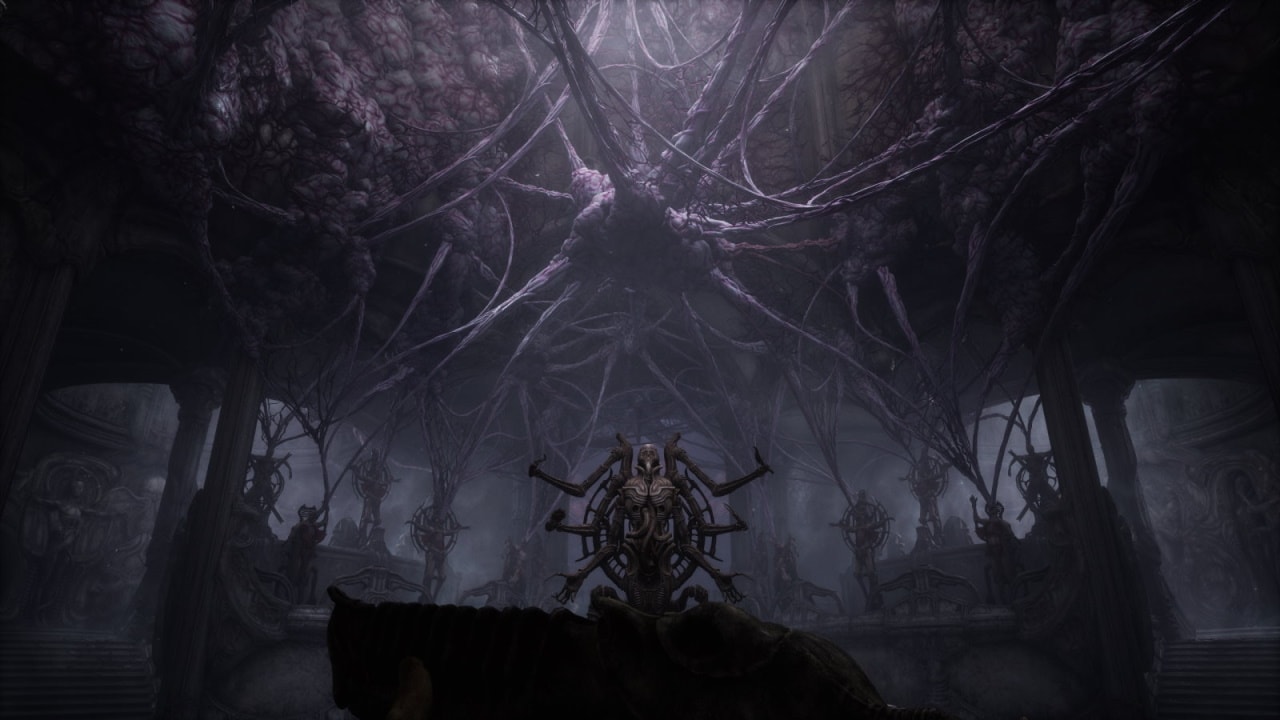
Guest blog by EBB Software: Integrating AMD FidelityFX™ Super Resolution 2 (FSR 2) into Scorn
In this guest post by EBB Software, learn how they integrated our FSR 2.1 plugin for Unreal Engine into their first title: Scorn

AMD FSR 2 UE plugin enhancements part 1: Intro & improving foliage appearance using the base pass
Discover one of several ways to improve upscaled foliage appearance in the first of this five part blog series on getting the most out of our FSR 2.1 Unreal Engine plugin.

Integrating VRS in The Riftbreaker
EXOR Studios and AMD have collaborated to add Variable Rate Shading in The Riftbreaker. Read this guest blog to find out more!

TressFX 5.0 arrives as a patch for Unreal Engine
UE4 TressFX 5.0 has been designed to build upon the many features of UE4 TressFX 4.1, while being much easier to use. Find out what’s new!

How to use AMD FidelityFX™ Super Resolution (FSR) 1.0 Unreal Engine 4 Plugin
Find out how to install and configure the AMD FidelityFX Super Resolution (FSR) 1.0 plugin for Unreal Engine 4.
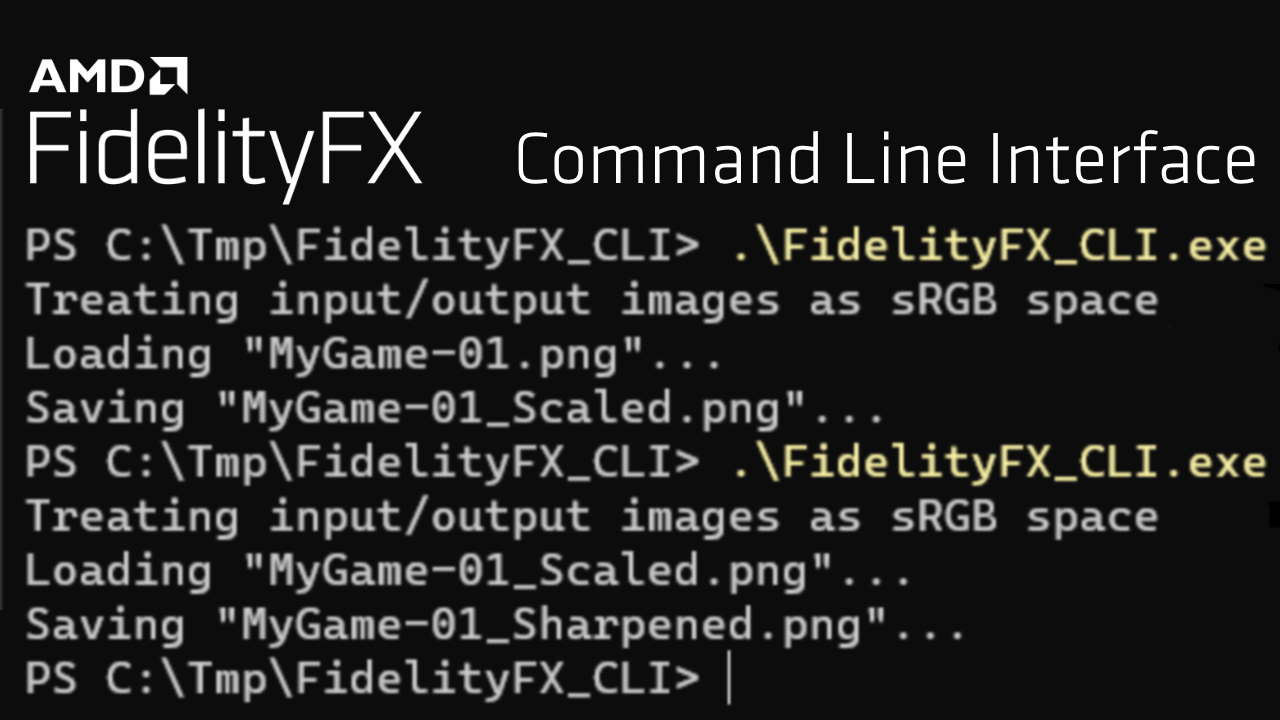
FidelityFX-CLI – Testing FSR and AMD FidelityFX™ CAS at the command-line
FidelityFX-CLI is a command-line Windows® program to test FidelityFX Super Resolution (FSR) 1.0 and Contrast Adaptive Sharpening (CAS) on image files.

Integrating AMD FidelityFX™ into the Ego Engine
Tom Hammersley from Codemasters talks about integrating FidelityFX into the Ego Engine and implementing Contrast Adaptive Sharpening (CAS).
Radeon ProRender and HIP
Our engineers who work on Radeon ProRender and related areas regularly keep you updated on their latest developments.
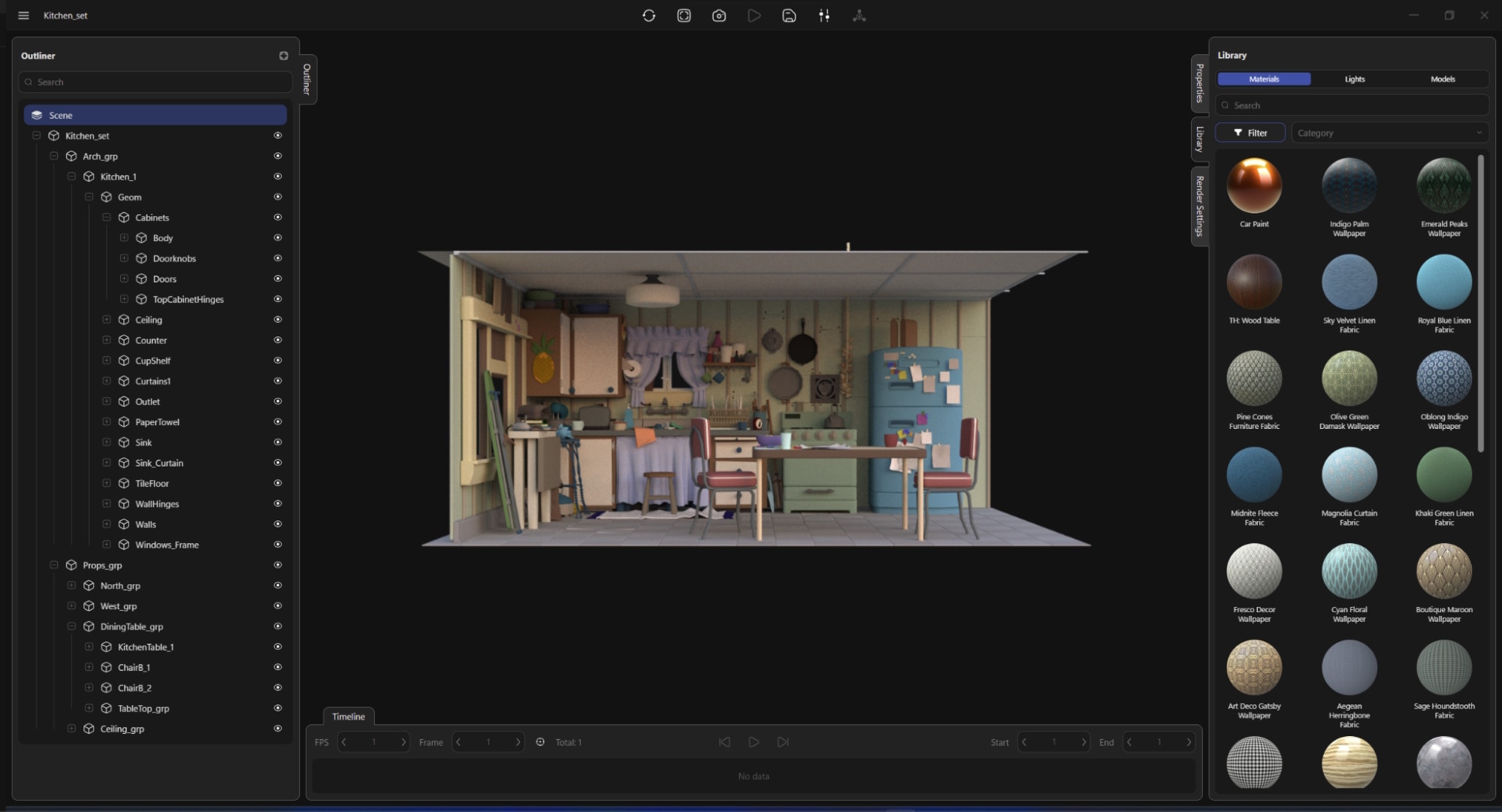
Announcing AMD RenderStudio – supporting collaborative 3D creation and rendering in the OpenUSD and MaterialX ecosystem
Introducing AMD RenderStudio – a set of tools for cross-user collaboration using the OpenUSD and MaterialX ecosystem.

HIP Ray Tracing 2.0 introduces improved custom function handling, bitcode linking, and more
HIPRT-v2 is now available for download! This post covers some of the most exciting features and optimizations.

Radeon™ ProRender SDK 3.1.0 introduces bevel shader support, light linking, and much more
We are happy to announce Radeon™ ProRender SDK 3.1.0 is finally available, so let’s take a look at the latest updates and improvements.
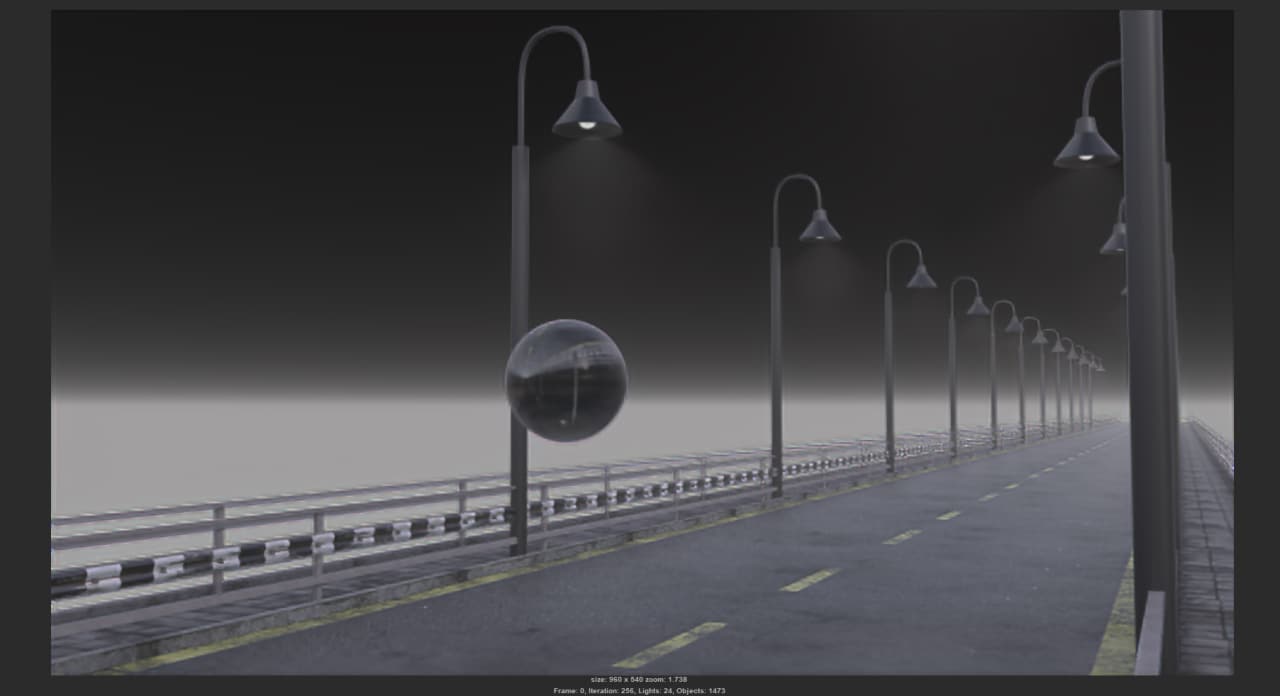
Latest updates to Radeon™ ProRender plug-ins
Find out more about all our updates to the Radeon ProRender plug-ins, including new fog and shadow settings for ProRender in Blender and Maya.

Introducing HIP RT – a ray tracing library in HIP
HIP RT is a new ray tracing library for HIP. It makes it easy to write a ray tracing app using HIP. Check out this page for more information.

Introducing Orochi – dynamic loading of HIP/CUDA® from a single binary
Orochi is a library that loads HIP and CUDA driver APIs dynamically at runtime, eliminating the overhead of maintaining separate backends.

Primitive variables, flexible ramp node, beta support for HIP in Radeon™ ProRender SDK 2.02.11
The latest release of the ProRender SDK introduces support for primitive variables, enhanced Cryptomatte AOVs, AMD’s HIP API, and much more.

New renderer backend and more in the updated Radeon™ ProRender SDK 2.02.10
Introducing a new renderer backend and support for simpler volumes, cutting planes, and artistic control of shadow color. Also, new SDK tutorials are now available.

Introducing Radeon™ ProRender SDK 2.02.6
Introducing support for Apple M1, heterogeneous volume, and deepEXR. Plus improved CPU rendering, and toon contour rendering.

AMD USD™ Hydra™ plug-in for Blender®
Find out about our exciting new plug-in for Blender®, which uses the power of Open Standards to enable you to reference and assemble USD™, and use MaterialX.

New Radeon™ ProRender plug-in updates
Our Blender® add-on, Autodesk® Maya® plug-in, and the SideFX® Houdini™ (USD) plug-in now incorporate the latest Radeon™ ProRender SDK.

Updated Radeon ProRender 2 SDK now available with many new features
Read about Cryptomatte support, light group AOVs, deformation motion blur, homogeneous volume support, and our toon material in Radeon™ ProRender.
Searchable table for all our software blogs
Looking for a searchable table of all our software blog posts? Well, you just found it!
| the_page_ID | Blog title | Description | Originally posted | Author | page_taxonomy_category |
|---|---|---|---|---|---|
| ~ID-002077 | AMD GPU Services, An Introduction | Useful information about features within our AMD GPU Services (AGS) library. | 28th April 2016 | Gareth Thomas | Product blogs |
| ~ID-002168 | Using AMD Crossfire API | Alternate Frame Rendering (AFR) is the method used to take advantage of Multiple GPUs in DirectX® 11 and OpenGL® applications. | 5th May 2016 | Anas Lasram | Product blogs |
| ~ID-002516 | VDR Follow Up – Fine Art of Film Grain | Expanding on Advanced Techniques and Optimization of VDR Color Pipelines: Details on the generation of film grain ideal for transfer functions like sRGB. | 4th April 2016 | Timothy Lottes | Product blogs |
| ~ID-002565 | VDR Follow Up – Grain and Fine Details | This post is going to look at very subtle changes to improve grain and fine details using the same 3-bit/channel quantization case from the prior post. | 13th April 2016 | Timothy Lottes | Product blogs |
| ~ID-002972 | GeometryFX 1.2 – Cluster Culling | With cluster culling, GeometryFX is able to reject large chunks of the geometry – with corresponding performance increases. | 18th May 2016 | Matthäus Chajdas | Product blogs |
| ~ID-003258 | AMD DOPPEngine – Post Processing on Your Desktop in Practice | DOPPEngine changes the output of your desktop in ways that can be very useful with various effects. | 23rd May 2016 | Bruno Stefanizzi | Product blogs |
| ~ID-003644 | Compressonator v2.3 release delivers ASTC, ETC2 codec support and GPU rendered image views | Compressonator is a set of tools to allow artists and developers to more easily create compressed texture image assets and easily visualize the quality impact of various compression technologies. | 27th June 2016 | Rosanna Ashworth-Jones | Product blogs |
| ~ID-004171 | The Importance of Audio in VR | The AMD TrueAudio Next open-source library and driver-controlled CU Reservation enables dramatically higher levels of audio rendering realism in VR. | 16th August 2016 | Carl Wakeland | Product blogs |
| ~ID-004290 | Using RapidFire for Virtual Desktop and Cloud Gaming | RapidFire SDK captures and encodes the input images entirely on the GPU and then copies the encoded result into the system memory for processing on the CPU. | 27th September 2016 | Bruno Stefanizzi | Product blogs |
| ~ID-004342 | VDR Follow Up – Tonemapping for HDR Signals | Follow up on VDR and practical advice on adapting a game’s tonemapping pipeline to both traditional display signals and new HDR output signals. | 5th October 2016 | Timothy Lottes | Product blogs |
| ~ID-004415 | Implementing LiquidVR™ Affinity Multi-GPU support in Serious Sam VR | This guest post by Croteam’s Karlo Jez gives a detailed look at how Affinity Multi-GPU support was added to their game engine. | 31st October 2016 | Karlo Jez | Product blogs |
| ~ID-004839 | AGS 5.0 – Shader Compiler Controls | Guide to using the shader compiler control API in AGS 5.0 | 12th January 2017 | Gareth Thomas | Product blogs |
| ~ID-004861 | Profiling video memory with Windows® Performance Analyzer | A guide to using the Windows Performance Analyzer tool, with a focus on video resources. | 9th February 2017 | Cristian Cutocheras | Product blogs |
| ~ID-005519 | AMD LiquidVR™ MultiView Rendering in Serious Sam VR | Croteam’s Karlo Jez writes about AMD LiquidVR MultiView Rendering in Serious Sam VR with the GPU Services (AGS) Library. | 27th February 2017 | Karlo Jez | Product blogs |
| ~ID-005822 | Compressonator V2.5 release adds enhanced HDR support | The BC6H codec has been improved and now offers better quality than previous releases, along with support for both 16 bit Half Float and 32 bit Float formats per channel. | 29th March 2017 | Rosanna Ashworth-Jones | Product blogs |
| ~ID-005948 | Content Creation Tools and Multi-GPU | mGPU isn’t just for gamers – if you’re a developer working on a game, you should think of using mGPU to make your life easier. | 5th May 2017 | Matthäus Chajdas | Product blogs |
| ~ID-006278 | Compressonator V2.6 release adds HDR tonemapping compression, new image analysis features | Information on the new features of Compressonator v2.6. | 3rd July 2017 | David Wilkinson | Product blogs |
| ~ID-006575 | Compressonator V2.7 Release adds cross platform support and 3D Model compression with glTF v2.0 | Information about the new features and optimizations in Compressonator v2.7. | 27th November 2017 | Rosanna Ashworth-Jones | Product blogs |
| ~ID-006903 | Compressonator V3.0 release brings powerful new 3D model features | Compressonator is a set of tools that allows artists and developers to work easily with compressed assets and easily visualize the quality impact of various compression technologies. | 14th May 2018 | Rosanna Ashworth-Jones | Product blogs |
| ~ID-007139 | New Compressonator 3.1 SDK for seamless integration into asset toolchains – and more! | This version contains several new features and optimizations, including new installers for the SDK, CLI and GUI tool, new batch compress support, improvements to Compressonator’s BC6H and ETC2 support, a new glTF model previewer, and more. | 21st November 2018 | Navin Patel | Product blogs |
| ~ID-007332 | Using AMD FreeSync™ Premium Pro HDR: Color Spaces | The first in a series of four tutorials related to AMD Freesync™ Premium Pro HDR. This tutorial covers terminology related to color. | 20th March 2019 | Ihor Szlachtycz | Product blogs |
| ~ID-007493 | Using AMD Freesync™ Premium Pro HDR: Tone Mapping | In part two of this tutorial, we cover the terminology of tone mapping, what tone mapping is, as well as different monitor features that influence how well a tone mapper will work. | 13th May 2019 | Ihor Szlachtycz | Product blogs |
| ~ID-007529 | Using AMD FreeSync™ Premium Pro HDR: Gamut Mapping | In this tutorial, we will be going over what gamut mapping is, how we implemented a gamut mapper to show how FreeSync HDR works, and some pitfalls with different gamut mapping algorithms. | 17th June 2019 | Ihor Szlachtycz | Product blogs |
| ~ID-007673 | Using Radeon™ GPU Analyzer with Direct3D®12 Compute | Radeon GPU Analyzer (RGA) has support for DirectX12 compute shaders with the command line tool. This mode can generate GCN/RDNA ISA disassembly for your compute shaders, regardless of the physically installed GPU. | 15th July 2019 | Amit Ben-Moshe | Product blogs |
| ~ID-007825 | Using Radeon™ GPU Analyzer with DirectX®12 Graphics | With DirectX 12 comes the power of generating disassembly and hardware resource usage statistics that are closest to the real-world case, and therefore making better performance optimization decisions. | 14th October 2019 | Amit Ben-Moshe | Product blogs |
| ~ID-007833 | TrueAudio Next Acceleration of Steam Audio Sound Reflections | Higher levels of realism and believability can be achieved when accurate sound reflections are deployed in a game or experience. Spatialized, physically generated reflections can achieve this goal. | 21st October 2019 | Carl Wakeland | Product blogs |
| ~ID-008277 | Integrating AMD FidelityFX™ into the Ego Engine | Tom Hammersley from Codemasters talks about integrating FidelityFX into the Ego Engine and implementing Contrast Adaptive Sharpening (CAS). | 18th December 2019 | Tom Hammersley | Product blogs |
| ~ID-008278 | Using AMD FreeSync™ Premium Pro HDR: Code Samples | Part 4 of a series of posts on AMD FreeSync™ Premium Pro Technology. Here, we look at how to enable FreeSync Premium Pro with all next gen graphics APIs. | 22nd January 2020 | Ihor Szlachtycz | Product blogs |
| ~ID-008283 | Announcing Compressonator 3.2 | The latest version of Compressonator is now available, featuring new BCn codec kernels, framework interfaces, cube maps, and more. | 9th January 2020 | Navin Patel | Product blogs |
| ~ID-011694 | Using the Visual Studio® Code Extension for RGA | This is a Visual Studio® Code extension for the Radeon GPU Analyzer (RGA). This extension makes it possible to use RGA directly from within VS Code. | 9th January 2020 | Rosanna Ashworth-Jones | Product blogs |
| ~ID-011724 | Getting Started with Radeon™ Memory Visualizer (RMV) | Radeon™ Memory Visualizer (RMV) is a tool provided by AMD for use by game engine developers. It allows engineers to examine, diagnose, and understand the GPU memory management within their projects. | 13th May 2020 | Colin Riley | Product blogs |
| ~ID-012337 | Compressonator 4.0 – Utilize the Power of GPU-based Encoding | The Windows version of Compressonator 4.0 supports GPU encoding with DirectX® Compute (DXC) or OpenCL™ (OCL) shaders. | 10th May 2020 | Navin Patel | Product blogs |
| ~ID-014063 | Radeon™ GPU Profiler 1.8 released | The latest release of Radeon™ GPU Profiler introduces an updated Radeon Developer Panel, Instruction Timing, and more. | 14th September 2020 | Chris Hesik | Product blogs |
| ~ID-014241 | Unified Radeon™ GPU Profiler and Radeon™ Memory Visualizer usage with Radeon™ Developer Panel 2.1 | This tutorial explains how to take advantage of the functionality in RDP v2.1 onwards, which unifies the RMV and RGP functionality from earlier versions to provide a unified workflow. | 1st October 2020 | Gordon Selley | Product blogs |
| ~ID-014293 | FidelityFX-CLI – Testing FSR and AMD FidelityFX™ CAS at the command-line | FidelityFX-CLI is a command-line Windows® program to test FidelityFX Super Resolution (FSR) 1.0 and Contrast Adaptive Sharpening (CAS) on image files. | 28th July 2021 | Adam Sawicki | Product blogs |
| ~ID-014806 | Radeon™ Memory Visualizer v1.1 adds support for aliased resources and more | Radeon Memory Visualizer V1.1 introduces support for aliased resources, and allows selection of a resource in the memory leak finder pane. | 23rd November 2020 | Anthony Hosier | Product blogs |
| ~ID-014939 | Compressonator 4.1 – SNORM support for BC4/BC5, MIP map filter support, and more | Compressonator v4.1 adds SNORM support for BC4 and BC5, MIP map filter support using either GPU or CPU, GPU-based compression and MIP map generation, and much more. | 23rd November 2020 | Navin Patel | Product blogs |
| ~ID-015006 | GPUPerfAPI v3.7 includes Radeon™ RX 6000 support and new raytracing counters | GPUPerfAPI v3.7 brings support for Radeon™ RX 6000 series GPUs, new raytracing counters for DirectX® Raytracing, a new scalar and instruction cache counter, and new raytracing High-Frequency counters in Microsoft® PIX2. | 23rd November 2020 | Amit Prakash | Product blogs |
| ~ID-015133 | Radeon™ GPU Profiler 1.9 introduces support for Radeon™ RX 6000 Series | The latest release of RGP introduces support for Radeon™ RX 6000 Series (RDNA™ 2) and DirectX® Raytracing, along with several additional new features. | 23rd November 2020 | Chris Hesik | Product blogs |
| ~ID-015339 | Hardware-Accelerated Ray Tracing in AMD Radeon™ ProRender 2.0 | With specific hardware acceleration features implemented, content creators can accelerate their rendering using AMD Radeon™ RX 6000 Series graphics cards with Radeon™ ProRender 2.0. | 23rd November 2020 | Takahiro Harada | Product blogs |
| ~ID-016143 | Using Radeon™ GPU Analyzer v2.4.1 with DirectX® Raytracing | Radeon™ GPU Analyzer v2.4.1 introduces support for DXR shaders in a new mode of the command line tool. | 12th February 2021 | Amit Ben-Moshe | Product blogs |
| ~ID-016509 | Radeon™ GPU Profiler v1.10 introduces GPU cache counters, Vulkan® ray tracing, and more | This latest release adds support for GPU cache counters, Vulkan® ray tracing, the latest RDNA™ 2 GPUs, and more. | 1st April 2021 | Chris Hesik | Product blogs |
| ~ID-017363 | Updated Radeon ProRender 2 SDK now available with many new features | Read about Cryptomatte support, light group AOVs, deformation motion blur, homogeneous volume support, and our toon material in Radeon™ ProRender. | 28th April 2021 | Takahiro Harada | Product blogs |
| ~ID-019308 | New Radeon™ ProRender plug-in updates | Our Blender® add-on, Autodesk® Maya® plug-in, and the SideFX® Houdini™ (USD) plug-in now incorporate the latest Radeon™ ProRender SDK. | 7th July 2021 | Brian Savery | Product blogs |
| ~ID-019750 | Radeon™ GPU Profiler 1.11 released | RGP 1.11 introduces ray tracing call targets, enhancements to cache counters, and more. | 21st July 2021 | Chris Hesik | Product blogs |
| ~ID-019914 | Compressonator 4.2 – Features update for BC1 and BC7 codecs, and more | Compressonator v4.2 brings improvements for BC1 and BC7 codecs, plus API, SDK, and CMake updates. | 30th July 2021 | Navin Patel | Product blogs |
| ~ID-020260 | AMD USD™ Hydra™ plug-in for Blender® | Find out about our exciting new plug-in for Blender®, which uses the power of Open Standards to enable you to reference and assemble USD™, and use MaterialX. | 19th August 2021 | Brian Savery | Product blogs |
| ~ID-020291 | Introducing Radeon™ ProRender SDK 2.02.6 | Introducing support for Apple M1, heterogeneous volume, and deepEXR. Plus improved CPU rendering, and toon contour rendering. | 31st August 2021 | Takahiro Harada | Product blogs |
| ~ID-020878 | How to use AMD FidelityFX™ Super Resolution (FSR) 1.0 Unreal Engine 4 Plugin | Find out how to install and configure the AMD FidelityFX Super Resolution (FSR) 1.0 plugin for Unreal Engine 4. | 23rd November 2021 | GPUOpen | Product blogs |
| ~ID-021024 | New renderer backend and more in the updated Radeon™ ProRender SDK 2.02.10 | Introducing a new renderer backend and support for simpler volumes, cutting planes, and artistic control of shadow color. Also, new SDK tutorials are now available. | 17th December 2021 | Takahiro Harada | Product blogs |
| ~ID-021100 | Understanding Graphs in Radeon GPU Profiler and GPUView | Find out how to read and understand graphs in Radeon GPU Profiler and GPUView in order to optimize your game more effectively. | 3rd December 2021 | Adam Sawicki | Product blogs |
| ~ID-021698 | Viewing DirectX® 12 Named Resources with Radeon™ Memory Visualizer 1.3 | Radeon Memory Visualizer (RMV) now supports Named Resources in DirectX® 12 applications. This blog explains how you can view them in RMV. | 20th January 2022 | GPUOpen | Product blogs |
| ~ID-021824 | Visualizing VGPR Pressure with Radeon™ GPU Analyzer 2.6 | Radeon GPU Analyzer 2.6 introduces VGPR Pressure Visualization. This post explains exactly how to get the most out of this brand-new feature. | 20th January 2022 | Amit Ben-Moshe | Product blogs |
| ~ID-021948 | Radeon™ GPU Profiler 1.12 features improvements to Instruction Timing | RGP 1.12 provides some significant enhancements to the Instruction Timing feature, including wavefront filtering and single-wavefront mode. | 20th January 2022 | Chris Hesik | Product blogs |
| ~ID-022639 | Introducing Orochi – dynamic loading of HIP/CUDA® from a single binary | Orochi is a library that loads HIP and CUDA driver APIs dynamically at runtime, eliminating the overhead of maintaining separate backends. | 1st April 2022 | GPUOpen | Product blogs |
| ~ID-022683 | Primitive variables, flexible ramp node, beta support for HIP in Radeon™ ProRender SDK 2.02.11 | The latest release of the ProRender SDK introduces support for primitive variables, enhanced Cryptomatte AOVs, AMD’s HIP API, and much more. | 7th March 2022 | Takahiro Harada | Product blogs |
| ~ID-023170 | Announcing Vulkan Memory Allocator 3.0.0 and Direct3D 12 Memory Allocator 2.0.0 | Find out more about the latest releases of VMA and D3DMA – our easy-to-integrate memory allocation libraries for Vulkan® and Direct3D® 12. | 25th March 2022 | Adam Sawicki | Product blogs |
| ~ID-023996 | Introducing HIP RT – a ray tracing library in HIP | HIP RT is a new ray tracing library for HIP. It makes it easy to write a ray tracing app using HIP. Check out this page for more information. | 12th April 2022 | GPUOpen | Product blogs |
| ~ID-024637 | Radeon™ Memory Visualizer 1.4 introduces Smart Access Memory support | Find out in this blog post how you can make all memory visible to the CPU in Radeon Memory Visualizer (RMV) v1.4 with Smart Access Memory. | 21st April 2022 | Glen Kwasny | Product blogs |
| ~ID-024662 | Radeon™ GPU Profiler 1.13 and Radeon Developer Panel 2.6 | RGP 1.13 adds enhanced ray tracing features, such as new performance counters and inline RT. RDP 2.6 includes improved data capture. | 21st April 2022 | Chris Hesik | Product blogs |
| ~ID-024819 | TressFX 5.0 arrives as a patch for Unreal Engine | UE4 TressFX 5.0 has been designed to build upon the many features of UE4 TressFX 4.1, while being much easier to use. Find out what’s new! | 4th May 2022 | Lisen Wang | Product blogs |
| ~ID-025448 | Announcing Radeon™ Memory Visualizer support for Linux | RMV is now available on Linux. RMV and RDP officially support Ubuntu 20.04 with Linux distros requiring additional dependencies. Check it out! | 13th June 2022 | Glen Kwasny | Product blogs |
| ~ID-025484 | Latest updates to Radeon™ ProRender plug-ins | Find out more about all our updates to the Radeon ProRender plug-ins, including new fog and shadow settings for ProRender in Blender and Maya. | 8th June 2022 | Brian Savery | Product blogs |
| ~ID-025705 | How to use the AMD FidelityFX™ Super Resolution 2 (FSR 2) Unreal Engine plugin | Find out how to install and configure the AMD FidelityFX Super Resolution (FSR) 2 plugin for Unreal Engine 4.26/4.27 and UE5. | 24th June 2022 | GPUOpen | Product blogs |
| ~ID-026634 | Improving raytracing performance with the Radeon™ Raytracing Analyzer (RRA) | Optimizing the raytracing pipeline can be difficult. Discover how to spot and diagnose common RT pitfalls with RRA, and how to fix them! | 15th September 2022 | David DiGioia | Product blogs |
| ~ID-029030 | AMD FSR 2 UE plugin enhancements part 1: Intro & improving foliage appearance using the base pass | Discover one of several ways to improve upscaled foliage appearance in the first of this five part blog series on getting the most out of our FSR 2.1 Unreal Engine plugin. | 19th October 2022 | GPUOpen | Product blogs |
| ~ID-029168 | AMD FSR 2 UE plugin enhancements part 4: Making a specific shading model write to the reactive mask | See ways you can improve suboptimal FSR 2 results caused by animated materials obscured by a fine mesh or grill with no motion vectors. | 19th October 2022 | GPUOpen | Product blogs |
| ~ID-029297 | AMD FSR 2 UE plugin enhancements part 2: Improving foliage appearance via content changes | Learn which content changes you can make in the Unreal Engine editor to improve the appearance of upscaled foliage. | 19th October 2022 | GPUOpen | Product blogs |
| ~ID-029298 | AMD FSR 2 UE plugin enhancements part 3: Improving foliage appearance with the ImproveStaticWPO patch | Find out how to apply one of our supplied Unreal Engine patches to improve upscaled foliage appearance with our FSR 2.1 plugin. | 19th October 2022 | GPUOpen | Product blogs |
| ~ID-029366 | AMD FSR 2 UE plugin enhancements part 5: Making materials reactive: Applying the LitReactiveShadingModel patch | This final part demonstrates how to apply the LitReativeShadingModel patch which adds a new Lit Reactive shading model. | 19th October 2022 | GPUOpen | Product blogs |
| ~ID-032457 | Learn about Radeon™ Raytracing Analyzer 1.1 | The latest update for RRA includes changes to the camera system and support for split triangles and rebraided instances. Check it all out here! | 14th December 2022 | Anthony Hosier | Product blogs |
| ~ID-034525 | RDNA 3: Radeon GPU Profiler 1.14 introduces support for Radeon™ RX 7000 Series, HIP, and more | Radeon GPU Profiler 1.14 is here, with support for Radeon™ RX 7000 series GPUs, profiling HIP applications, and much more. Take a look! | 14th December 2022 | Chris Hesik | Product blogs |
| ~ID-036468 | Introducing AMD Render Pipeline Shaders SDK | Render Pipeline Shaders (RPS) SDK is now available for open beta access! | 15th December 2022 | GPUOpen | Product blogs |
| ~ID-036855 | Announcing GFXReconstruct (v0.9.17) with DirectX®12 and DirectX® Raytracing support | AMD and LunarG are pleased to announce DirectX®12 (D3D12) and DirectX® Raytracing (DXR) support for the GFXReconstruct capture/replay tool. | 18th January 2023 | GPUOpen | Product blogs |
| ~ID-036927 | Guest blog by EBB Software: Integrating AMD FidelityFX™ Super Resolution 2 (FSR 2) into Scorn | In this guest post by EBB Software, learn how they integrated our FSR 2.1 plugin for Unreal Engine into their first title: Scorn | 28th February 2023 | EBB Software | Product blogs |
| ~ID-037035 | AMD ROCm™ installation (amd-lab-notes) | Installation of the AMD ROCm™ software package can be challenging. This introductory material shows how to install ROCm on a workstation with an AMD GPU card that supports the AMD GFX9 architecture. | 26th January 2023 | amd-lab-notes | Product blogs |
| ~ID-037066 | Introducing Compressonator v4.3 – Brotli-G, multi-texture mipmap generation, and more | Compressonator v4.3 is out now! v4.3 features Brotli-G lossless compression, multi-texture mipmap generation, and much more. | 27th January 2023 | GPUOpen | Product blogs |
| ~ID-037553 | Radeon™ ProRender SDK 3.1.0 introduces bevel shader support, light linking, and much more | We are happy to announce Radeon™ ProRender SDK 3.1.0 is finally available, so let’s take a look at the latest updates and improvements. | 10th March 2023 | GPUOpen | Product blogs |
| ~ID-038919 | Introducing Compressonator v4.4 with AVX-512 support for BC1 Encoding | Compressonator v4.4 adds AVX-512, AVX2, and SSE4 variations of BC1 encoding in the Compressonator Core library, new CLI options, and more. | 10th July 2023 | GPUOpen | Product blogs |
We have lots more documentation for you to discover!

Don’t miss our manual documentation! And if slide decks are what you’re after, you’ll find 100+ of our finest presentations here.

Browse our technical blogs, and find valuable advice on developing with AMD hardware, ray tracing, Vulkan®, DirectX®, Unreal Engine, and lots more.

Browse all our useful samples. Perfect for when you’re needing to get started, want to integrate one of our libraries, and much more.

Words not enough? How about pictures? How about moving pictures? We have some amazing videos to share with you!

The home of great performance and optimization advice for AMD RDNA™ 2 GPUs, AMD Ryzen™ CPUs, and so much more.

Discover our published publications.




